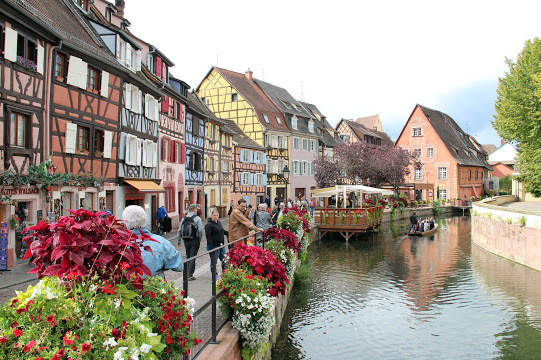Every time I have a riesling or pinot blanc from Alsace, I am enveloped in regret The only ageworthy riesling I have in my cellar is from Washington state. The last time I ordered one in a restaurant was when I spotted a deal for a 10-year-old Weinbach pinot blanc. It was sublime, but did I go out and buy some of the current vintage? No.
Colmar, the commercial center of Alsace.
With that in mind, I recently dived into a flight of Alsace pinot blanc, pinot gris and pinot noir from several Alsace providers. All of these pinot iterations are deceiving: all are descendants of pinot noir. Pinot gris in Alsace is pinot grigio in Italy. Same grape, just a different interpretation of "gray" that describes the grape skin. Pinot blanc is slightly different in that it is a genetic mutation of pinot noir. Any flavor differences between the three white grapes is mostly a result of terroir and climate.
First, let me say Alsace producers should get out of the red wine business. For centuries they have struggled to make a decent pinot noir and I have yet to taste one. The two I sampled were awkward, vegetal and astringent. With great pinot noirs coming out of Burgundy and the West Coast, there are ample comparisons.
Second, the region's rieslings and pinot blancs are showing less sweetness nowadays. Just one pinot gris from Emile Beyer exhibited some residual sugar in my tasting flight. The 2013 Albert Boxer pinot blanc reserve was unique -- five years of bottle age gave it a riper, slightly maderized profile I loved. And it was dry.
The 2016 Domaine Paul Blanck Pinot Blanc was a perfect example of a simple Alsace wines with varietal stone fruit flavors, a dash of mineral and citrus.
The pinot blancs and pinot gris are great summer sippers. The austere French pinot gris is superior in my mind to the fruity, extracted Italian pinot grigio.

